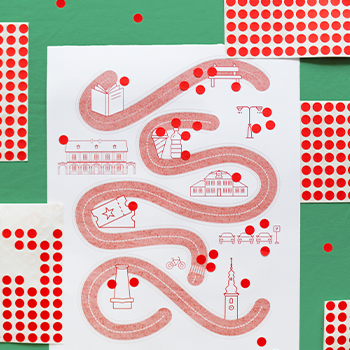The thesis focuses on new ways of approaching architecture and urbanism using new digital technologies. The work also dedicates itself and closely focuses on the creation of educational materials for the exhibition according to the RVP (Framework Educational Program) and ŠVP (School Educational Program).
Currently, there are new opportunities to bring architecture closer in different ways. Thanks to new technologies, new possibilities and new ways of presenting architecture are opening up. One of them is the use of new digital technologies, such as AR (augmented reality) and VR (virtual reality), which allow the duplication or reconstruction and building of architecture in the virtual world. The concept of the exhibition “Baroque Polabí” applies these new technologies in its online and offline exhibition environment. It focuses on the presentation of baroque architecture and baroque landscapes in Lysá nad Labem. The concept combines a virtual tour with digital interactive installations, indoor and outdoor exhibitions – field excursions.

A questionnaire survey of teachers from the primary school in Lysá nad Labem identified the themes of architecture and urbanism in the RVP and ŠVP of the selected school. The analysis of the questionnaires also identified key areas of interest for educational activities. Based on these findings, a concept of an educational program for the first stage, adapted to different age categories, was designed.
The difficulty of the educational program is divided into three levels: Level I. (Kindergarten (preschool) – 1st grade) 5-7 years old, Level II. (2nd–3rd grade) 7-8 years old, Level III. (4th–5th grade) 9-10 years old.
The educational program is divided into three thematic areas, which are part of each level: Area No. 1 Urbanism and Architecture – What can I find in the city?, Area No. 2 My surroundings – Špork, Baroque in detail – park adjustments, Baroque architecture, Area No. 3 Baroque landscape.
The student developed a prototype of the first level of the educational program called “What can I find in the city?”. In addition, a concept for modifying this educational program into self-service worksheets was created. The student is the author of the conceptual, textual, and graphic design of the prototype educational aids, including the manual.

